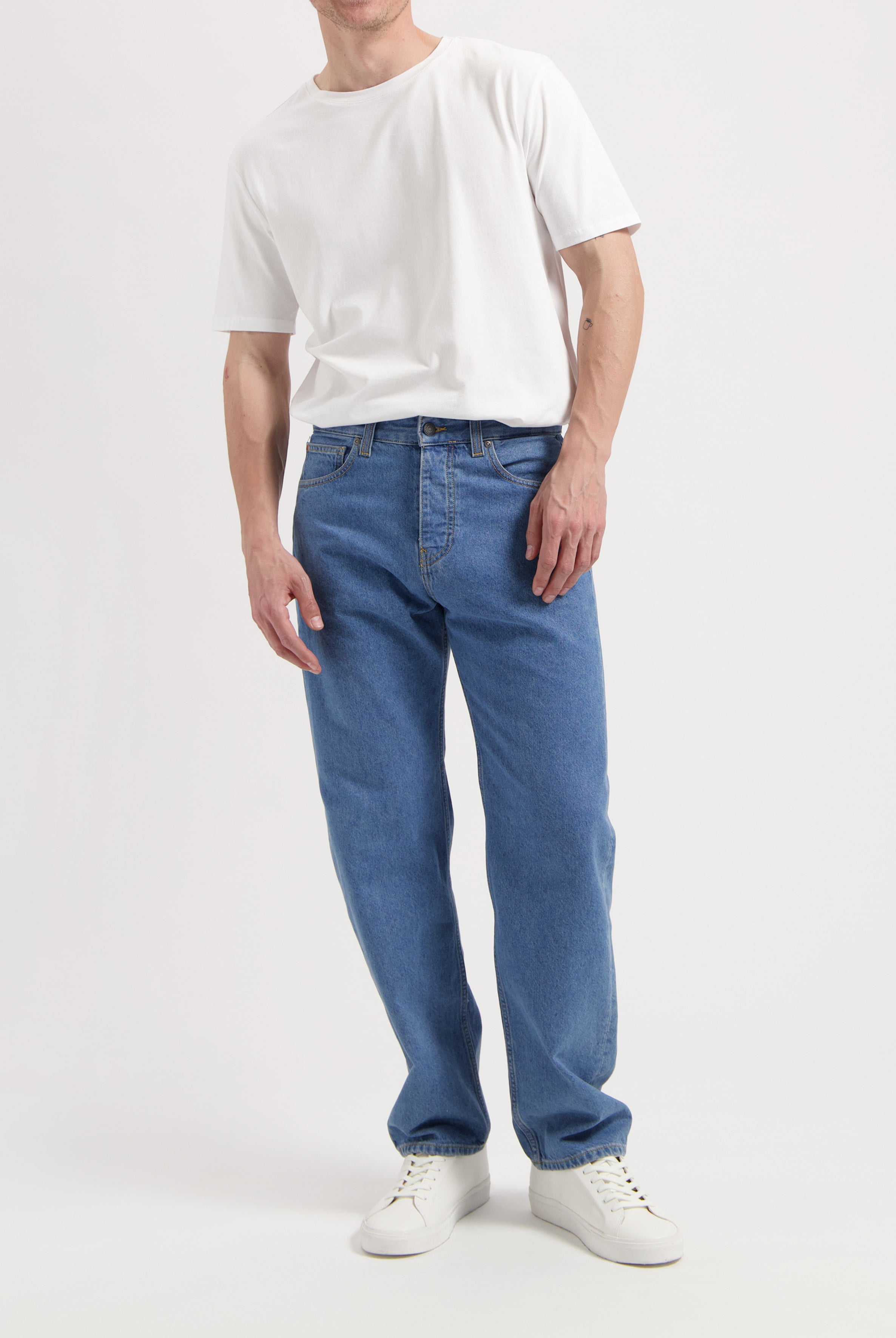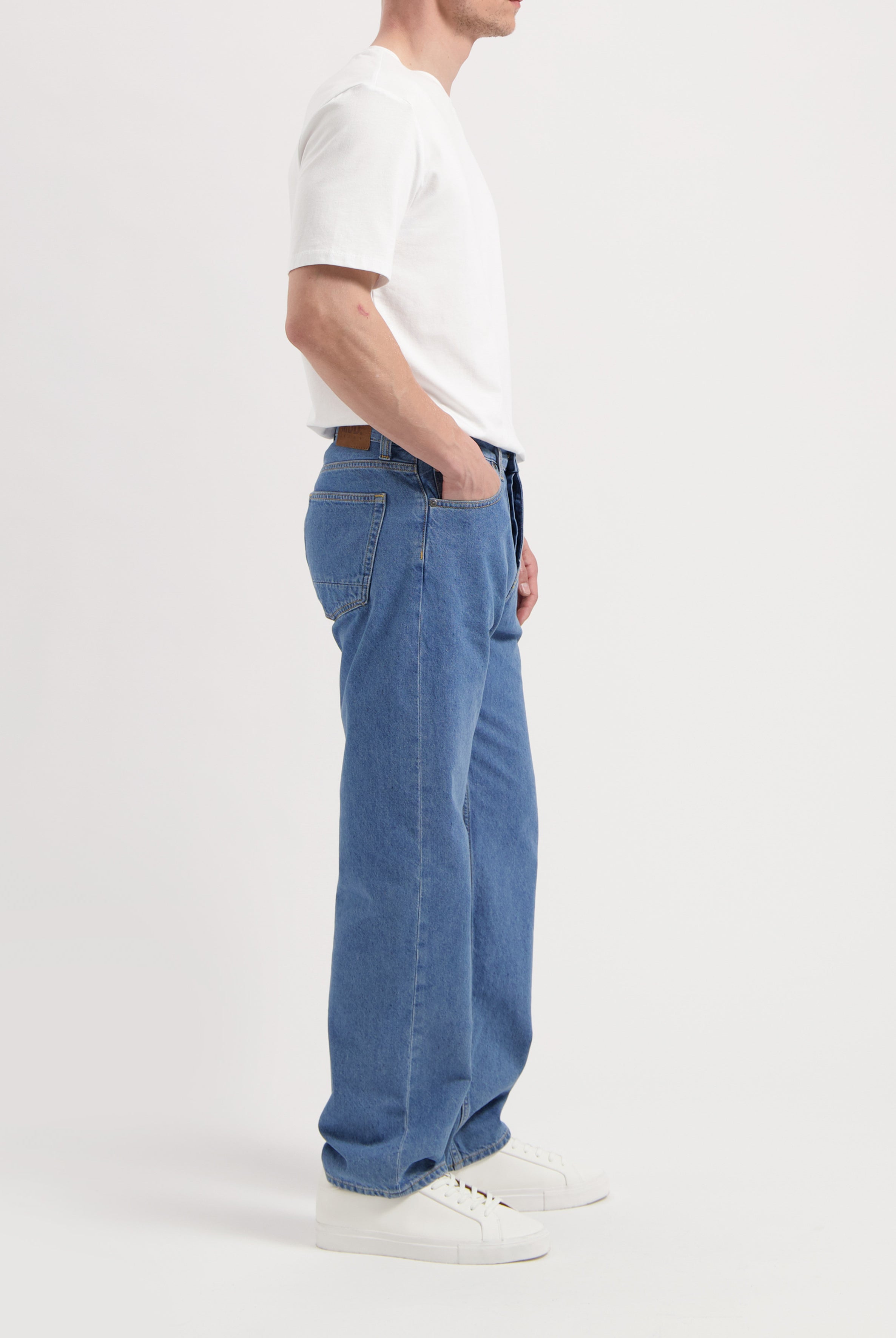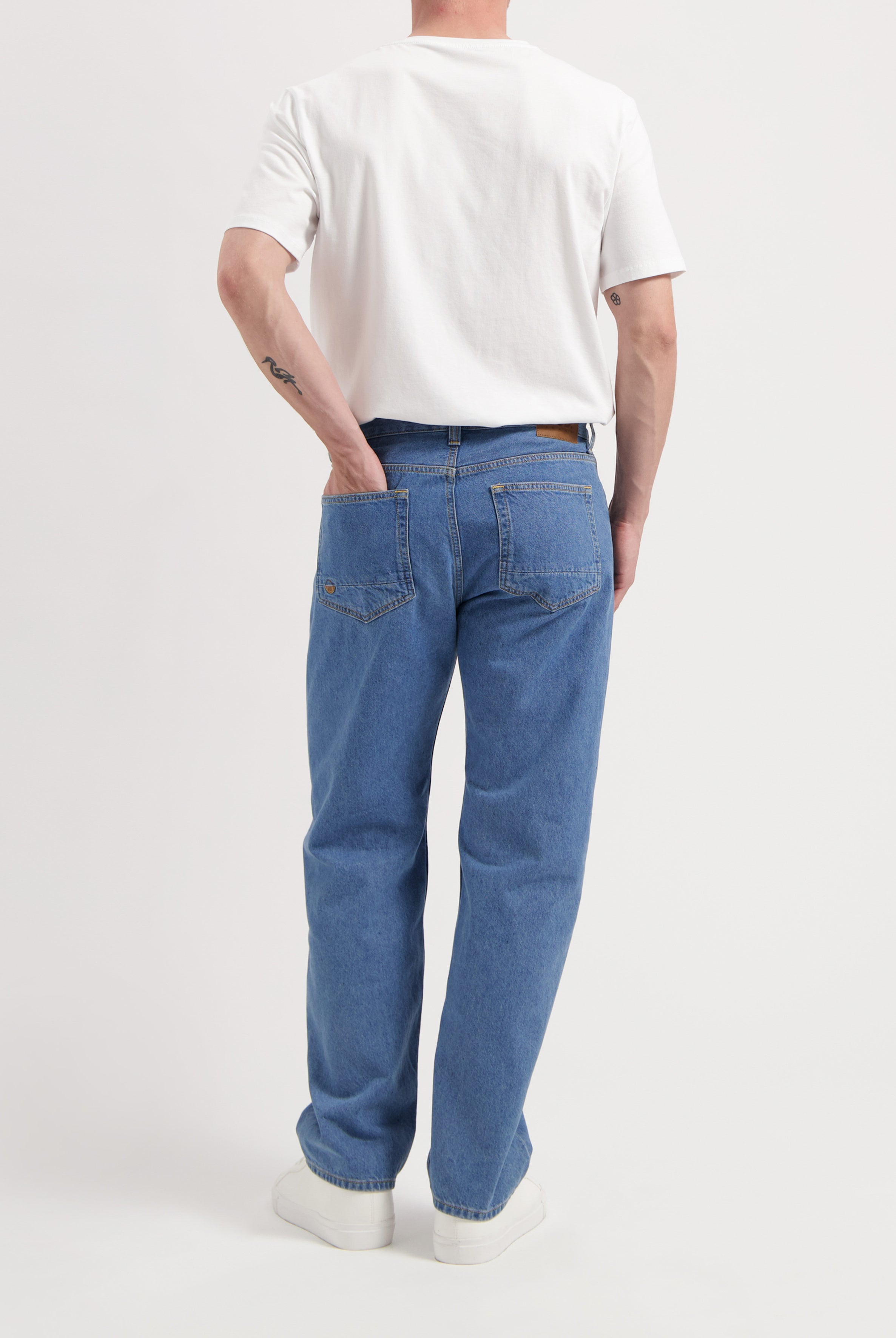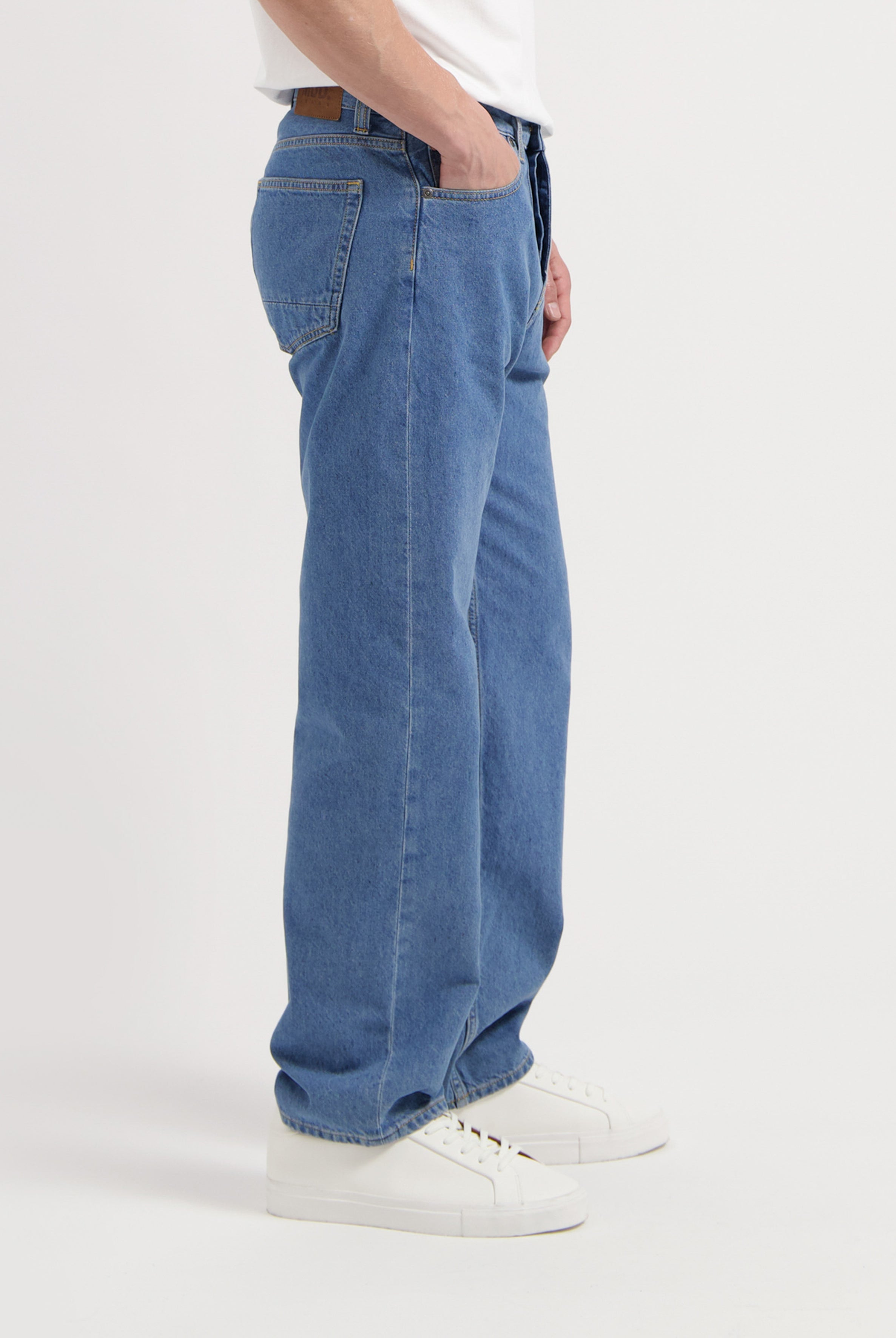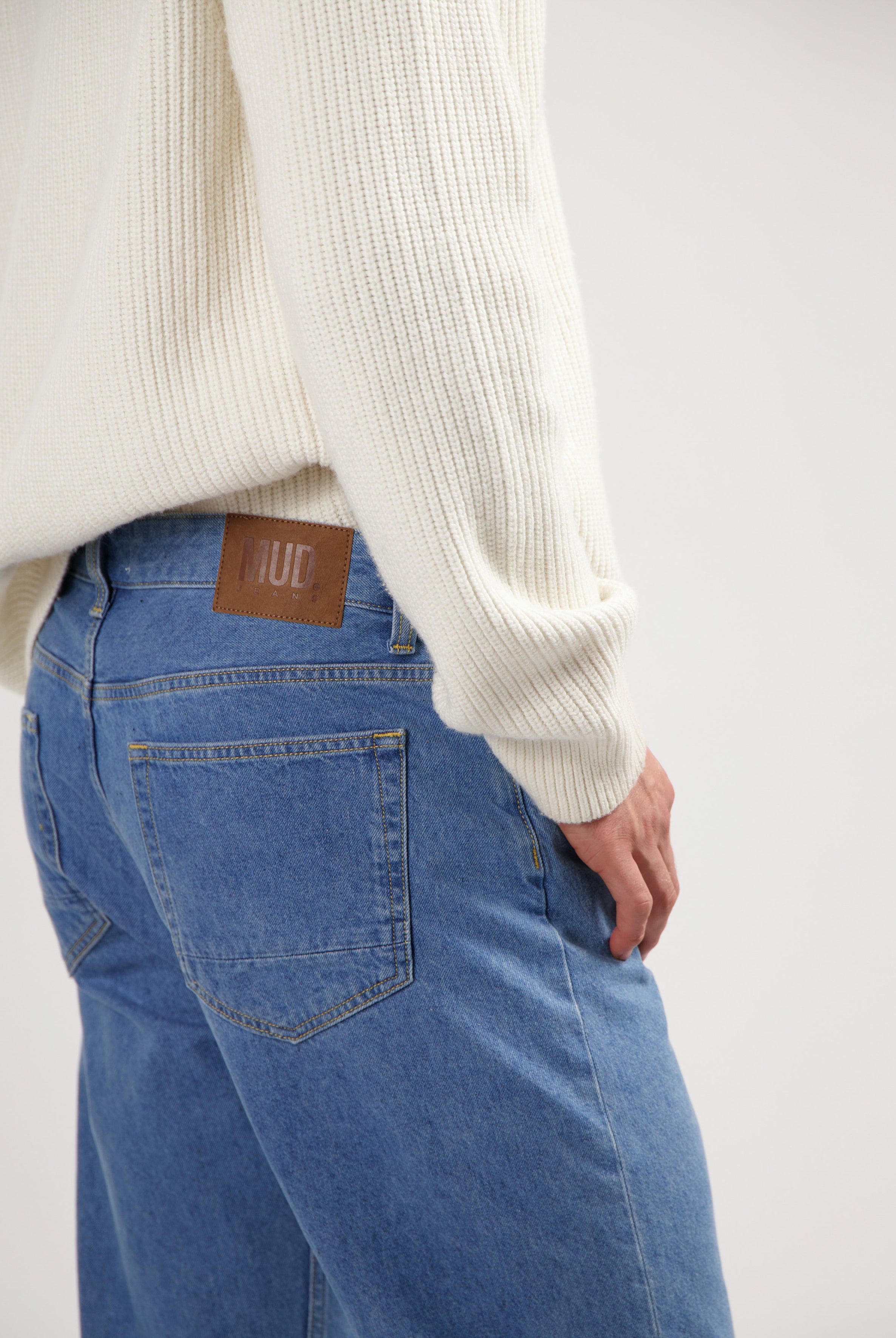Are you looking for comfortable and sustainable fashion? Clothing made from TENCEL could be just what you need. This revolutionary fibre, derived from wood pulp, is known for its softness and breathability. But TENCEL has much more to offer. In this article, we'll delve into the details of this remarkable fabric, exploring what TENCEL is, the different types of fibre available and its durability.
In this article:
- What is TENCEL?
- How is TENCEL fabric produced?
- Which TENCEL fibers exist? 5 types
- 7 benefits of TENCEL
- TENCEL vs. viscose
- How do you wash TENCEL fashion?
- TENCEL: a fabric perfect for slow fashion
- Frequently asked questions about TENCEL
What is TENCEL?
TENCEL is a fibre produced from sustainable wood pulp. Hold on, it's a bit more nuanced. TENCEL is actually a brand name owned by Lenzing AG, an Austrian company that markets both lyocell and modal under this name. To fully understand TENCEL, it is helpful to explore what lyocell and modal are.
What is Lyocell?
Lyocell is a relatively recent textile fibre made of cellulose found in wood pulp. While it often comes from eucalyptus trees, it can also be sourced from other types of trees, such as beech or pine. In sustainable production, a closed-loop system is used, where resources such as water are reused or recycled. Lyocell is soft, strong, breathable and absorbs moisture.
What is Modal?
Modal is a textile fibre made from wood pulp, similar to lyocell. The difference between the two is that modal comes from the beech tree. The production of modal involves a chemical process to break down the fibers, making it less environmentally friendly than lyocell.
What is TENCEL Lyocell?
Back to the first question: TENCEL (actually TENCEL™) is the brand name for lyocell and modal, produced by Lenzing AG. The company exclusively uses wood pulp from sustainably managed forests, ensuring safe working conditions and using a 'closed-loop' system. These aspects may not be guaranteed with ‘standard’ lyocell and modal. By choosing TENCEL™, you can be sure it has been produced sustainably.
How is TENCEL fabric produced?
TENCEL fabric is produced by extracting cellulose fibers from wood pulp. The process begins with shredding the wood and dissolving it in a liquid. Next, the cellulose is pressed through a spinneret to create fibers, which are eventually spun into yarn. TENCEL is often mixed with other fibers to produce strong and comfortable fashion.

Which TENCEL fibers exist? 5 types
Several types of TENCEL fibers exist, each with its own unique properties. Let's explore five of them.
1. TENCEL Lyocell
TENCEL Lyocell is made from wood pulp sourced from eucalyptus, beech, or pine trees grown in sustainably managed forests. The processing employs a ‘closed-loop’ system, where materials are recycled and reused, minimising environmental impact. Each Lyocell fiber is strong, soft and moisture-regulating.
2. TENCEL Modal
TENCEL Modal is made from sustainable beech trees. During production, chemical treatment is required to turn the wood pulp into the final fibre. Modal is soft to the touch, long-lasting, brightly coloured and very flexible.
3. TENCEL Lyocell Micro
TENCEL Lyocell Micro offers an even finer fibre quality than ‘standard’ lyocell. Its extra-fine yarn enables the creation of lighter fabrics. The fibre has a so-called ‘titer’ of 0.8, ideal for luxurious fabrics.
4. TENCEL Lyocell Filament
TENCEL Lyocell Filament is made from wood pulp sourced from sustainably managed forests and is produced exclusively in Austria using a closed-loop process. Moreover, the fibre is certified by The Vegan Society and is biodegradable. Lyocell Filament is considered to be a plant-based alternative to silk, hence its other name, ‘TENCEL LUXE’.
5. TENCEL Lyocell REFIBRA
TENCEL Lyocell fibers made with REFIBRA technology contain at least 30% pre- and post-consumer cotton waste alongside wood pulp. Reusing this raw material prevents ending up in landfills or being burnt. REFIBRA complies with the Recycled Claim Standard (RCS).
7 benefits of TENCEL
TENCEL provides a range of benefits for both you and the environment. Interested? Below are seven reasons to convince you.
- Soft: TENCEL feels soft on the skin. It's like wrapping yourself in luxury every day.
- Breathable: TENCEL breaths, making the fibre feel comfortable in both summer and winter.
- Moisture-wicking: TENCEL absorbs water better than cotton, which makes this sustainable material perfect for activewear.
- Sustainable: Made from wood pulp sourced from sustainably managed forests, TENCEL fibers are biodegradable.
- Strong: TENCEL is strong and versatile, making it suitable for various applications. The fibre is durable and long-lasting.
- Wrinkle-free: TENCEL wrinkles a lot less than cotton, reducing the need for ironing or steaming.
- Hypoallergenic: TENCEL naturally inhibits the growth of bacteria, making it ideal for people with sensitive skin.
TENCEL vs viscose
TENCEL and viscose are frequently seen as the same, which is partly true, but they have key differences. Both fabrics are made of cellulose and share qualities such as softness and moisture absorption. However, they differ in the production processes and sustainability.
Viscose production uses harmful chemicals to get regenerated cellulose, which often ends up in the environment due to the absence of a closed system. Additionally, the wood pulp used for viscose is often sourced from forests that are not sustainably managed. In contrast, TENCEL is produced by using more environmentally friendly methods and sustainable practices.
How do you wash TENCEL fashion?
TENCEL is strong and stays beautiful for a long time. By washing consciously, you can extend the lifespan of TENCEL textiles, reducing the need for new clothes and benefiting the environment. Follow the tips below to wash TENCEL properly:
- Wash Gently: Turn clothes inside out and wash them gently.
- Follow label instructions: Follow the washing label for optimal results.
- Use low temperatures: Wash at 40°C or, preferably, at 30°C or with the eco setting.
- Choose natural detergents: Use natural detergents to protect the fibers.
- Air dry: Let clothes air dry to save energy.
-
Preserve shape: Dry delicate items, like blouses, on a hanger to maintain their shape.

TENCEL: a fabric that’s perfect for slow fashion
Although TENCEL is a relatively new innovation, this textile fibre has the potential to become a popular fabric to contribute to a more sustainable fashion industry. Its qualities align well with the slow fashion movement, where sustainable materials and an eco-friendly production process are the norm.
At MUD Jeans, we also use TENCEL for our denim, specifically Lyocell REFIBRA. These fibers contain up to one-third recycled cotton scraps mixed with wood pulp from sustainably managed forests. We also use organic cotton, recycled denim, and a short supply chain. You can enjoy sustainable, comfortable jeans that make you look good, feel good and do good.
Discover the TENCEL Lyocell Men's Collection






